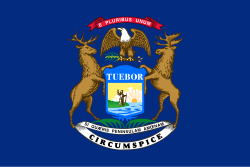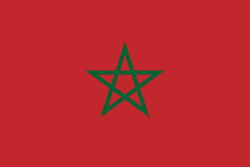Argentinas Grand Prix
 | |
|---|---|
| Autódromo Oscar Alfredo Gálvez |
Argentinas Grand Prix var en deltävling i formel 1-VM som kördes på Autódromo Oscar Alfredo Gálvez i Buenos Aires i Argentina. Loppet kördes årligen mellan 1953 och 1998 med undantag för åren 1959, 1961-1970, 1976 och 1982-1994. Det Grand Prix som genomfördes 1971 kördes utanför formel 1-VM och tillät utöver F1-bilar även Formel 5000- och amerikanska Formel A-bilar att delta, detta för att utöka startfältet.[1]
Vinnare Argentinas Grand Prix
Ljusröd bakgrund betyder att loppet inte ingick i Formel 1-VM.
| År | Bana | Förare | Konstruktör | |
|---|---|---|---|---|
| 1998 | Buenos Aires | Ferrari | ||
| 1997 | Buenos Aires | Williams-Renault | ||
| 1996 | Buenos Aires | Williams-Renault | ||
| 1995 | Buenos Aires | Williams-Renault | ||
| 1994 – 1982 | Kördes ej | |||
| 1981 | Buenos Aires | Brabham-Ford | ||
| 1980 | Buenos Aires | Williams-Ford | ||
| 1979 | Buenos Aires | Ligier-Ford | ||
| 1978 | Buenos Aires | Lotus-Ford | ||
| 1977 | Buenos Aires | Wolf-Ford | ||
| 1976 | Kördes ej | |||
| 1975 | Buenos Aires | McLaren-Ford | ||
| 1974 | Buenos Aires | McLaren-Ford | ||
| 1973 | Buenos Aires | Lotus-Ford | ||
| 1972 | Buenos Aires | Tyrrell-Ford | ||
| 1971 | Buenos Aires | Matra | ||
| 1970 – 1961 | Kördes ej | |||
| 1960 | Buenos Aires | Cooper-Climax | ||
| 1959 | Kördes ej | |||
| 1958 | Buenos Aires | Cooper-Climax | ||
| 1957 | Buenos Aires | Maserati | ||
| 1956 | Buenos Aires | Ferrari | ||
| 1955 | Buenos Aires | Mercedes | ||
| 1954 | Buenos Aires | Maserati | ||
| 1953 | Buenos Aires | Ferrari | ||
Referenser
- ^ ”Racing round-up” (på engelska). Motor Sport Magazine. maj 1971. https://www.motorsportmagazine.com/archive/article/march-1971/42/racing-round. Läst 25 juli 2019.
Externa länkar
| ||||||||
Media som används på denna webbplats
Flag of South Africa, used between 1928 and 1982. It is identical to the 1982 to 1994 version except that the shade of blue is darker. It is also known as the "Oranje-Blanje-Blou".
The civil ensign and flag of Belgium. It is identical to Image:Flag of Belgium.svg except that it has a 2:3 ratio, instead of 13:15.
The Flag of Europe is the flag and emblem of the European Union (EU) and Council of Europe (CoE). It consists of a circle of 12 golden (yellow) stars on a blue background. It was created in 1955 by the CoE and adopted by the EU, then the European Communities, in the 1980s.
The CoE and EU are distinct in membership and nature. The CoE is a 47-member international organisation dealing with human rights and rule of law, while the EU is a quasi-federal union of 27 states focused on economic integration and political cooperation. Today, the flag is mostly associated with the latter.
It was the intention of the CoE that the flag should come to represent Europe as a whole, and since its adoption the membership of the CoE covers nearly the entire continent. This is why the EU adopted the same flag. The flag has been used to represent Europe in sporting events and as a pro-democracy banner outside the Union.Flag of the State of Nevada. The flag is described in Nevada Revised Statutes Chapter 235, Sec. 20 as follows: The body of the flag must be of solid cobalt blue. On the field in the upper left quarter thereof must be two sprays of Sagebrush with the stems crossed at the bottom to form a half wreath. Within the sprays must be a five-pointed silver star with one point up. The word “Nevada” must also be inscribed below the star and above the sprays, in a semicircular pattern with the letters spaced apart in equal increments, in the same style of letters as the words “Battle Born.” Above the wreath, and touching the tips thereof, must be a scroll bearing the words “Battle Born.” The scroll and the word “Nevada” must be golden-yellow. The lettering on the scroll must be black-colored sans serif gothic capital letters.
Flag of Portugal, created by Columbano Bordalo Pinheiro (1857–1929), officially adopted by Portuguese government in June 30th 1911 (in use since about November 1910). Color shades matching the RGB values officially reccomended here. (PMS values should be used for direct ink or textile; CMYK for 4-color offset printing on paper; this is an image for screen display, RGB should be used.)
Författare/Upphovsman: Gustavo Girardelli, Licens: CC BY-SA 4.0
Autódromo Osca y Juan Gálvez Circuito N° 6 con la S de Senna









































